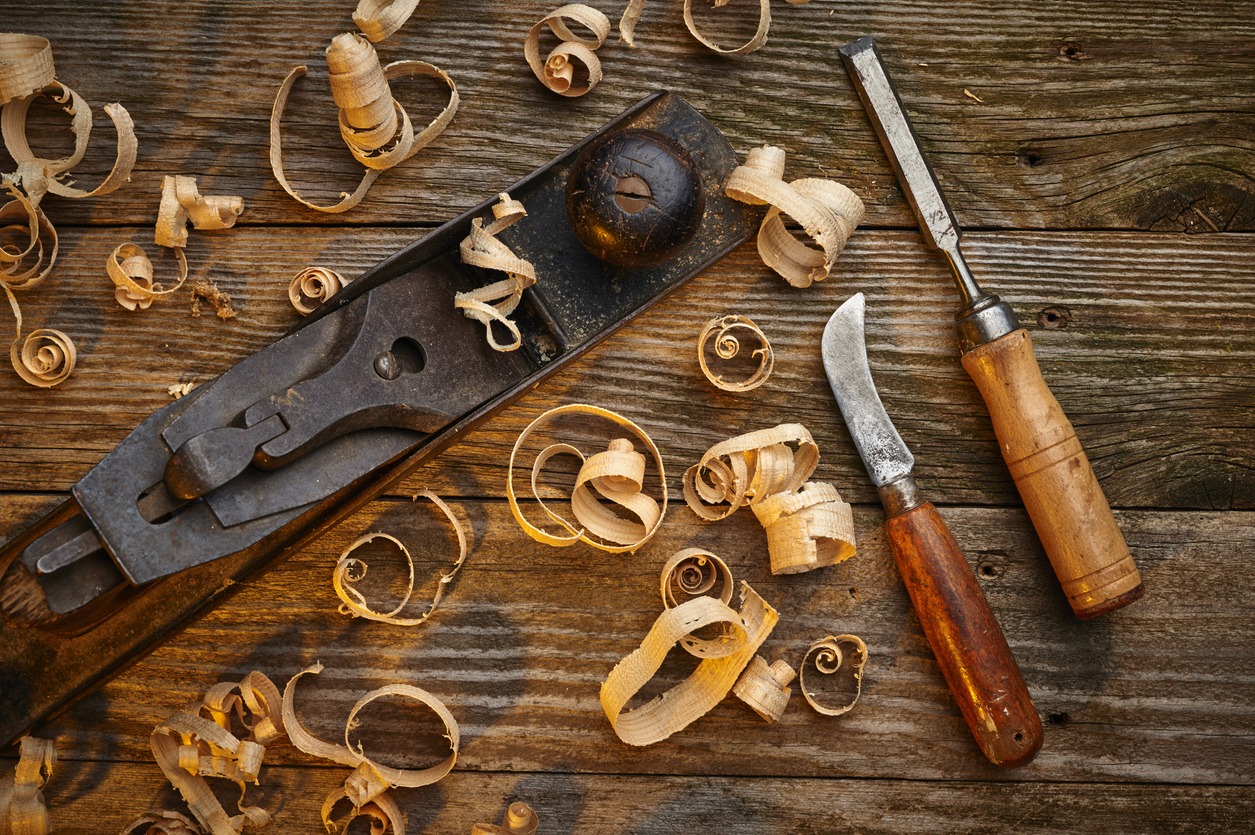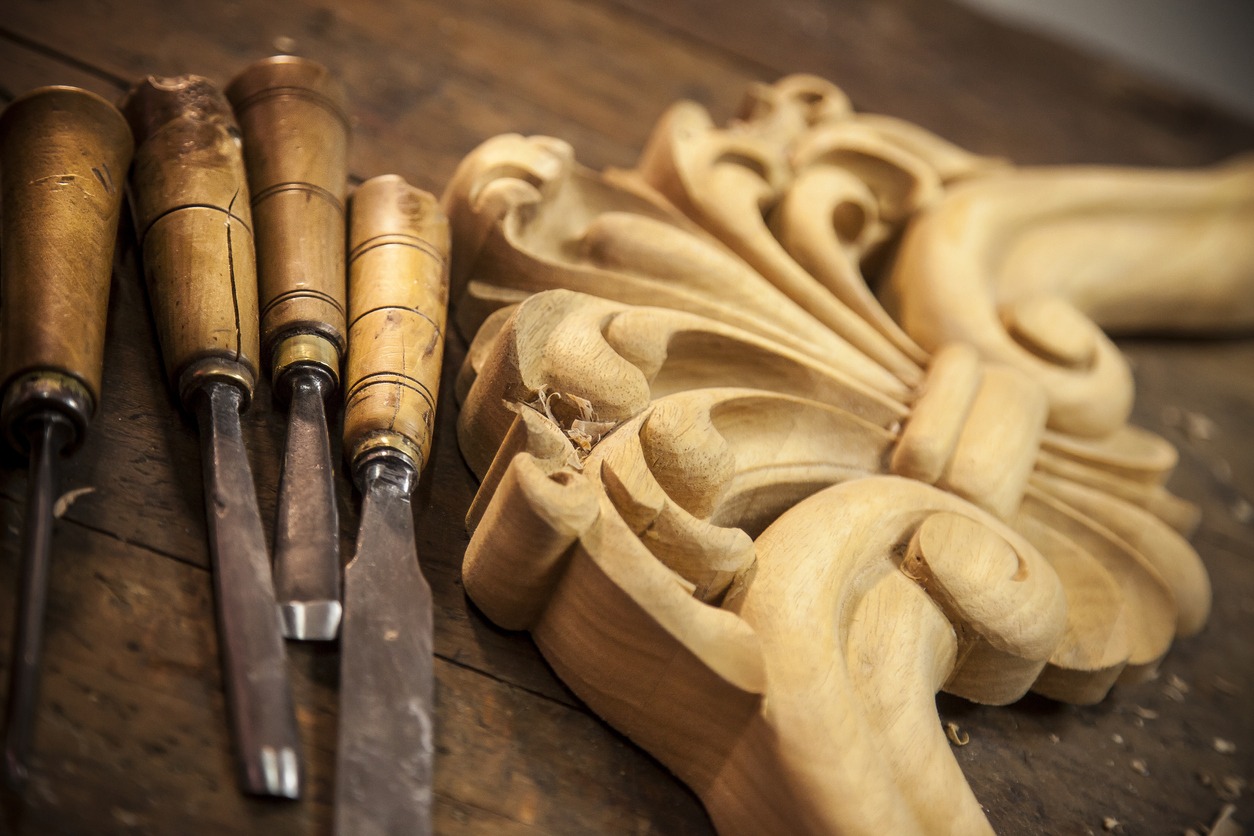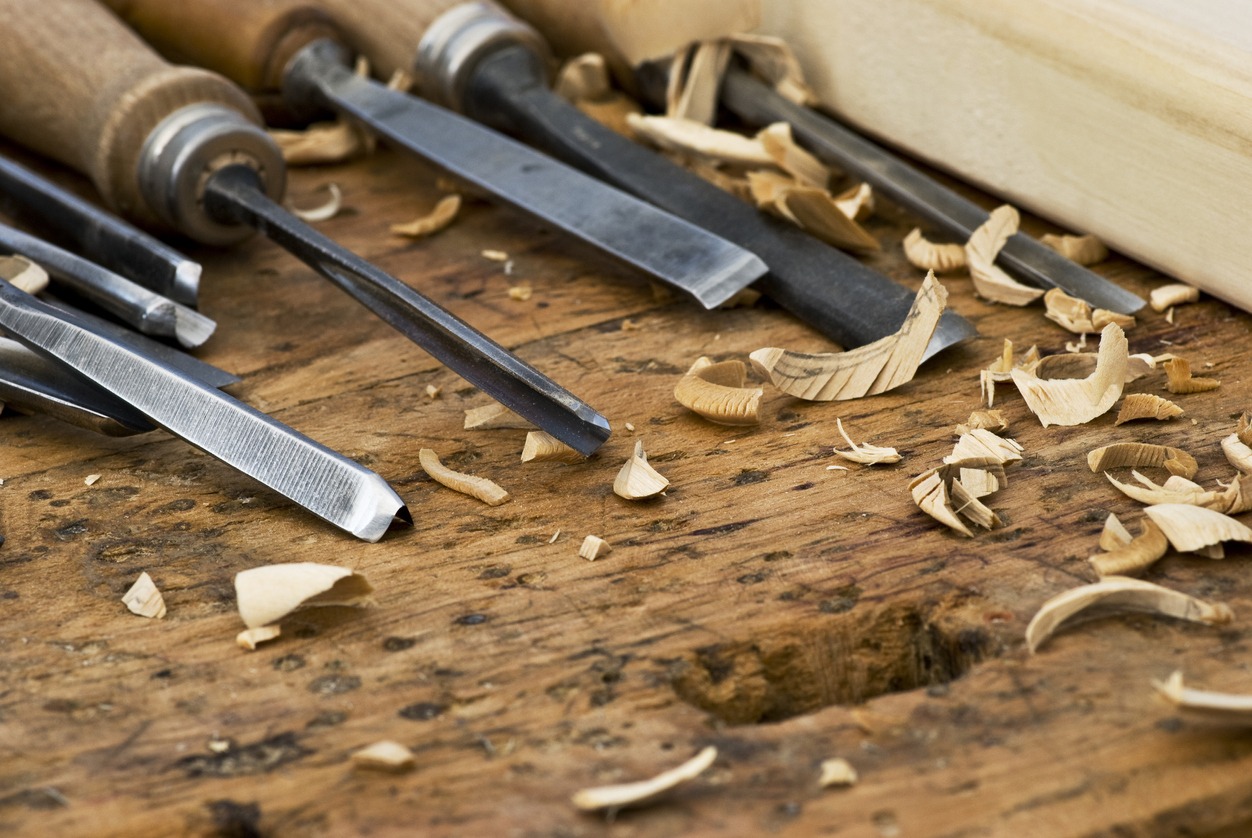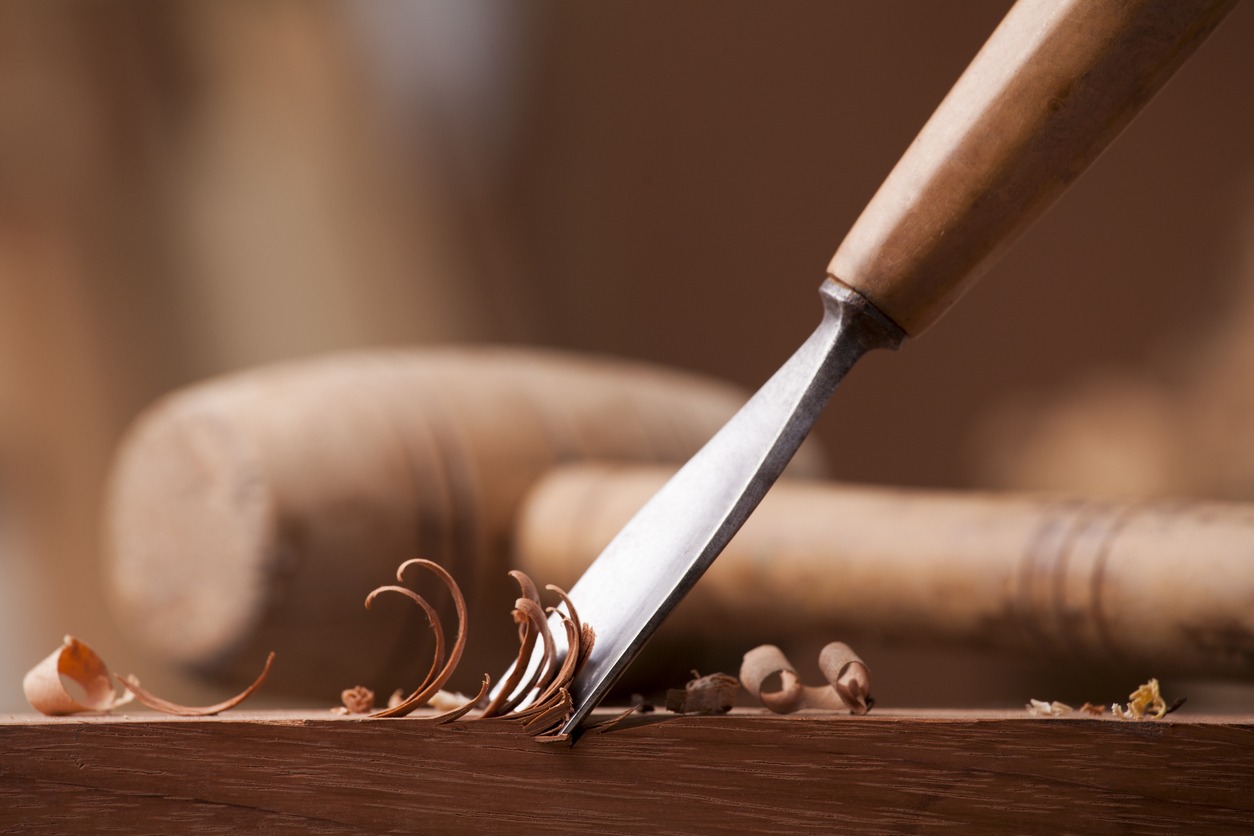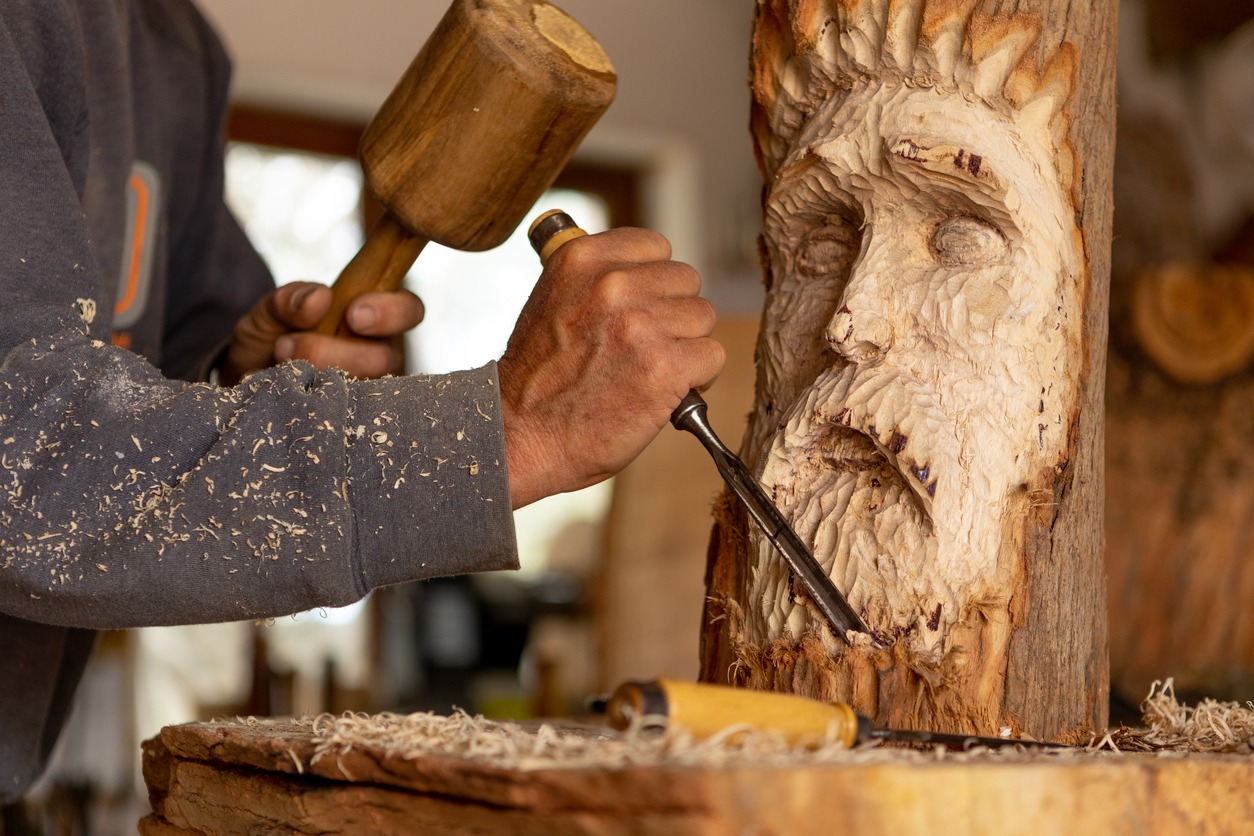Wood carving is a timeless art form that has captivated people for centuries. Artisans craft beautiful objects from wood, such as furniture, figurines, and decorations. In this article, we’ll take a closer look at wood carving, especially the tools that make it possible.
Why Try Wood Carving?
Wood carving isn’t just a hobby; it’s a form of creative expression that can also help reduce stress. This art is often done with woodworking as a form of ornamentation. The best part is that almost anyone can dive into this craft. All you need is the right touch, the appropriate wood, and the essential wood carving tools. With these, you can embark on a journey to acquire a skill that fills you with pride.
For beginners, one of the main challenges is finding the perfect wood carving tools. With so many options available, it’s easy to feel lost and overwhelmed. They need tools that are sturdy, easy to use, and won’t break the bank.
To dabble in wood carving, it requires patience, dedication, and an eye for detail. Armed with a basic set of wood carving tools and some guidance from books and online tutorials, you can start creating impressive masterpieces that are sure to delight your family and friends!
History of Wood Carving
Wood carving has a fascinating history dating back to ancient civilizations like Egypt, Greece, and Rome. Initially, wood was primarily used for practical purposes, such as crafting tools and weapons. However, as time passed, people began to recognize the aesthetic value of wood, leading to its use in creating decorative items.
During the Middle Ages, wood carving gained prominence as it adorned churches and cathedrals. Skilled artisans crafted intricate designs portraying religious scenes and figures. The Renaissance era further fueled the popularity of wood carving, and its application extended to furniture, paneling, and architectural embellishments.
In the modern era, wood carving remains a cherished art form. While it may no longer be the primary choice for adorning religious buildings, it’s still widely employed to fashion exquisite decorative pieces and furniture. Various wood carving styles exist, including relief carving, where designs are carved into the wood’s surface, and chip carving, which involves removing small chips of wood to create a design.
One of the enduring appeals of wood carving is its ability to produce unique, one-of-a-kind creations. Each piece is meticulously hand-carved, ensuring that no two items are exactly alike. This individuality makes hand-carved pieces highly sought after by collectors and enthusiasts willing to invest in these artisanal treasures.
Wood Carving Tools
To craft stunning wood carvings, you need the right tools at your disposal. Wood carving encompasses different tools, such as chisels, gouges, and knives, each tailored to specific tasks like wood removal or detail work.
One crucial factor in choosing wood carving tools is the quality of the steel. High-quality steel holds a sharp edge longer, reducing the need for frequent sharpening, and is more resistant to breakage.
For beginners, investing in a wood carving tool set is an excellent starting point. These sets provide the essential tools needed at a reasonable cost, enabling you to familiarize yourself with the craft. As your skills grow, you can expand your tool collection. Let’s explore some of the primary wood carving tools and their functions:
- Chisels: These basic tools come in various shapes and sizes, ideal for removing significant wood portions and shaping flat or rounded surfaces.
- Gouges: Same as chisels but with a curved edge, gouges excel at carving concave shapes, creating curves, and adding contours.
- Knives: Wood carving knives with small blades are perfect for crafting fine details and intricate designs, making precise cuts and delicate lines.
- V-tools: Featuring a V-shaped cutting edge, V-tools are essential for crafting fine details and decorative lines, and they’re handy for carving small features like eyes or hair.
- Mallets: These tools assist by striking chisels and gouges, making wood removal more efficient. They come in wood or rubber and vary in size.
Chisels
Chisels are the Swiss Army knives of woodworking. They come with a sharp, flat-edged end and a handle on the other, coming in various shapes and sizes, each tailored for specific tasks. Some chisels are designed to cut through wood, while others can drive nails into boards or even tackle stone without breaking a sweat. For beginners, starting with larger chisels before using mini chisels for intricate detail work is recommended.
Here are some types of chisels used for wood carving:
- Bench Chisels: These are your all-purpose chisels, available in various sizes and used for general woodworking tasks like cutting joints and mortises.
- Bevel-Edged Chisels: These have beveled sides that make it easier to access tight corners and remove material.
- Mortise Chisels: With a thicker blade than bench chisels, mortise chisels are designed for cutting mortises, those rectangular holes that accommodate tenons in wood joinery.
- Firmer Chisels: These are similar to bench chisels but come with a thicker blade, suitable for heavy-duty work like roughing out large pieces of wood.
- Paring Chisels: Paring chisels feature longer, thinner blades than bench chisels and excel at delicate tasks such as shaping small details and removing small wood amounts.
- Japanese Chisels: With a distinct shape, Japanese chisels have tapered blades, thinner at the tip than at the base, making them ideal for intricate, precise work.
When choosing the type of chisel for carving, consider the nature of the task at hand and pick a chisel type that aligns with your specific woodworking needs. Pay attention to the size of the chisel, as they come in various dimensions, from small to large. It’s important to match the chisel’s size with the scale of your project so you can be more efficient.
Also, be mindful of the material, as they are crafted from a variety of substances like high-carbon steel and Japanese white steel. Each material offers distinct properties that can impact your project.
Gouges
Wood carving gouges are like chisels, but they have a curved cutting edge instead of a flat one. Their gently curved edges and concave form resemble the scoop of a spoon, making them excellent for creating both shallow and deep hollows in wood. Gouges play a crucial role in wood carving, as their curved edges can shape concave and convex areas, enhancing the aesthetics of the final product.
Gouges come in a variety of types, each with its distinct shape and size, such as straight gouges, bent gouges, fishtail gouges, and spoon gouges. Each type serves a specific purpose, from carving intricate details to roughing out larger areas or creating smooth curves.
The size of a gouge is another factor to consider when selecting the right tool for a specific task. Gouges vary in size, from small, narrow gouges perfect for detailed work to larger ones capable of removing substantial sections of wood. The choice of gouge should align with the type of wood you’re working with, as well as the size and shape of the area to be carved. For intricate details in a small space, a shallow gouge may be ideal, while a larger gouge with a deeper curve might be better suited for carving larger areas with pronounced curves.
Consider the bevel angle of the gouge when selecting the right tool. Gouges with a steeper bevel angle are well-suited for softer woods, while those with a shallower bevel angle are more appropriate for harder woods.
V Carving Tools and Veiner or V-tool
Much like gouges, V wood carving tools are designed for carving grooves, but as the name suggests, these tools feature a V-shaped cutting edge. When applied to the wood, this V-edge crafts a slender groove, making it perfect for adding lines and small details to wood carving projects.
V carving tools and their closely related veiner tools offer a bit more depth compared to your typical carving gouge. These tools are especially favored in various styles of relief carving. For beginners, V-tools offer an excellent opportunity to enhance fine detailing skills and expand the range of projects they can tackle.
The veiner tool possesses a similar shape to a gouge but with elongated sides. When pressed into the wood, it creates a U-shaped cut – that’s why it’s sometimes called “U-Gouge.” With its slim, one-millimeter wide blade on each side, the veiner tool excels at producing fine lines and detailed cuts, making it perfect for small-scale projects like accenting furniture legs.
On the other hand, the V-tool is a compact, detail-oriented instrument with an edge that boasts a sweeping downward curve rather than the U-shaped one seen in finer tools. It is particularly useful when working with specific wood types like oak or maple, where you need fewer, broader cuts from your blade while still maintaining a solid grip.
These V-carving tools, including V-tools and veiners, allow you to bring intricate designs and fine lines to life. They are useful for carving various details, lettering, and outlining in your woodworking projects.
Knives
Knives are indispensable wood carving tools, serving a wide spectrum of carving techniques. They come in various types, each with a distinct shape and size to suit specific carving needs.
1. Carving Knives
Carving knives are available in diverse sizes and shapes, each designed for particular cutting tasks. The shape of the knife influences the level of detail achievable while ensuring precision during wood carving. The blade’s attributes, such as being straight or curved, short or long, also play a pivotal role.
Choosing the appropriate carving knife hinges on the type of wood you plan to work with, as different woods require varying degrees of force and pressure during carving. Carving through hard substances can be more challenging than soft ones due to the reduced resistance, making it essential to keep your knives sharpened for optimal results.
2. Chip Carving Knives
Chip carving knives are specialized tools for particular carving techniques, such as chip carving. They feature a straight, sharp blade ideal for precise cuts in various wood types. Chip carving, is a beginner-friendly method, as it is quick and easy. The elongated blade of chip carving knives, typically measuring around 1-½ inches, features an elongated handle, facilitating precise cuts or incisions to remove specific shapes or chips. These knives work best with softwoods like basswood or butternut, although they can adapt to different hardwoods depending on your project’s requirements.
3. Detail Knives
Detail knives are characterized by shorter, pointed blades, perfect for crafting intricate details and patterns in your wood carving projects.
4. Hook Knives
Hook knives feature a curved blade, ideal for creating deep, rounded cuts and shaping concave or convex areas in your carving.
5. Whittling Knives
Whittling is a beloved style of wood carving that’s accessible and doesn’t demand an extensive tool arsenal or a large workspace. It involves taking a piece of wood and using a specially designed carving knife to achieve a specific design. Whittling knives typically have a curved blade and a comfortable handle for easy handling while shaping small slivers or wood pieces. Softwood is the preferred choice for whittling, as it is easier to shape and work with.
When selecting a knife for wood carving, consider the blade’s size and shape, as well as the type of wood you’ll be working on. A longer blade is suitable for long, sweeping cuts, while a shorter blade is better for intricate work. The blade’s shape, whether straight, curved, or hooked, is also a key factor in choosing the right knife for your specific task.
Mallets
Mallets play a crucial role in wood carving, serving as the driving force behind chisels and gouges to create cuts and shapes in wood. They are also employed for the removal of larger wood sections and the creation of texture on the wood’s surface. Various types of mallets are available, each with its distinct characteristics.
1. Wooden Mallets
One of the most commonly used mallets in wood carving is the wooden mallet. Typically crafted from hardwoods like beech or maple, it boasts a cylindrical or rectangular head designed for striking chisels and gouges.
2. Rubber Mallets
The rubber mallet, on the other hand, is constructed from a soft, non-marring rubber material. It is an ideal choice for delicate or softer woods that may be vulnerable to damage when struck with a harder wooden mallet.
When choosing a mallet for wood carving, consider its weight and size, aligned with the type of wood you’ll be working with. A heavier mallet is better suited for removing larger wood pieces, while a lighter mallet is more appropriate for delicate carving work. Additionally, the shape of the mallet head is a significant factor to contemplate, as it can influence the angle and depth of the cuts made with the chisels and gouges. Some mallets feature a cylindrical head, while others have a rectangular or angled head, each tailored for specific types of cuts and shapes.
Leather Strop Kit
Sharp blades are the safest and most efficient to use because they require less force and control. To keep your tools performing well, get yourself a strop/leather strip combo and regularly hone your blades.
Safety Gear and Equipment
Safety is paramount when working with wood carving tools. Protect yourself by wearing safety goggles to shield your eyes from shavings and chips. Additionally, consider wearing gloves or finger protection to ensure the safe handling of your tools. Always keep your hands well clear of sharp edges and exercise caution to maintain a safe carving environment.
How to Use Wood Carving Tools
Using wood carving tools effectively involves precision and a strong focus on safety. To ensure a smooth carving process, consider the following essential tips:
1. Choose the right tool
The first step is selecting the appropriate tool designed for your specific task. The wrong tool can lead to damage to both the tool and the wood.
2. Proper grip
Maintain a balanced grip on the tool. It should be firm but not excessively tight. Hold the tool at a comfortable angle while ensuring that your fingers are kept well away from the cutting edge.
3. Apply even pressure
Use your dominant hand to apply consistent and even pressure while carving, and your non-dominant hand should help steady the tool.
4. Follow the grain
Always carve in the same direction as the wood grain to prevent the wood from splitting or tearing. Carving against the grain can lead to unwanted results.
5. Take small bites
Make controlled and precise cuts with each pass of the tool, taking small bites of the wood. This approach helps maintain accuracy and minimizes the risk of making mistakes.
6. Keep tools sharp
Dull tools can be more hazardous than sharp ones. Regularly sharpen your tools and maintain their edges with the help of a honing stone. Sharp tools not only improve safety but also the quality of your carving.
7. Wear safety gear
Safety should be a top priority when using wood carving tools. This includes wearing appropriate protective gear such as gloves to protect your hands, safety goggles to shield your eyes, and a dust mask to prevent respiratory issues due to wood particles.
8. Maintain your tools
In addition to these precautions, proper tool maintenance is vital.
Clean your tools after each use to remove wood particles and dust.
Oil the blades to prevent rust and maintain their longevity.
Regularly sharpen the edges with a honing stone or sharpening tool to ensure optimal cutting performance.
Approach wood carving with care, patience, and the utmost attention to safety, and you’ll have a fulfilling and secure carving experience, creating beautiful woodwork without compromising your well-being.
Safety Precautions when Wood Carving
Safety precautions are paramount when it comes to wood carving. Here are some important safety tips to keep in mind:
Wear appropriate safety gear. Safety should be your top priority. Always wear safety glasses or goggles to protect your eyes from flying wood chips and dust. Use gloves to protect your hands, and consider wearing a dust mask to prevent inhaling wood dust.
Use sharp tools. Dull tools can lead to slips and accidents. Keep your carving tools sharp, and make sure they are in good working condition. Cut away from your body, not towards it.
Work in a well-ventilated area. Wood dust can be harmful if inhaled over time. Carve in a space with good air circulation. If possible, use a dust collector or air filtration system to reduce airborne dust.
Be aware of your surroundings. Keep your workspace tidy and free from obstructions. Remove potential distractions, and concentrate on your work to avoid accidents.
Take regular breaks. Carving for long periods can lead to fatigue and reduced concentration. Take short breaks every hour or so to rest your hands, stretch, and refresh your mind.
Keep your tools organized. A disorganized workspace can be hazardous. Store your tools safely when not in use, and keep them organized to avoid accidents.
Learn and follow safety guidelines. Understand and follow safety guidelines and recommendations for the specific tools and techniques you are using. Many carving clubs and organizations provide resources on safe carving practices.
Have first aid supplies on hand. Accidents can happen, so it’s a good idea to have basic first aid supplies nearby in case you need them.
Take a woodworking safety course. If you’re new to woodworking and wood carving, consider taking a safety course to learn best practices and techniques from experienced woodworkers.
Use a mallet safely. When using a mallet to strike your carving tools, ensure your hands and fingers are clear of the path of the mallet.
Work calmly and patiently. Rushing through your carving projects can lead to mistakes and accidents. Take your time, be patient, and enjoy the process.
Remember that safety should always be your top priority. By following these safety precautions, you can enjoy wood carving while minimizing the risk of injury. Wood carving is a beautiful and rewarding craft, and with the right safety measures in place, you can create stunning works of art safely.
